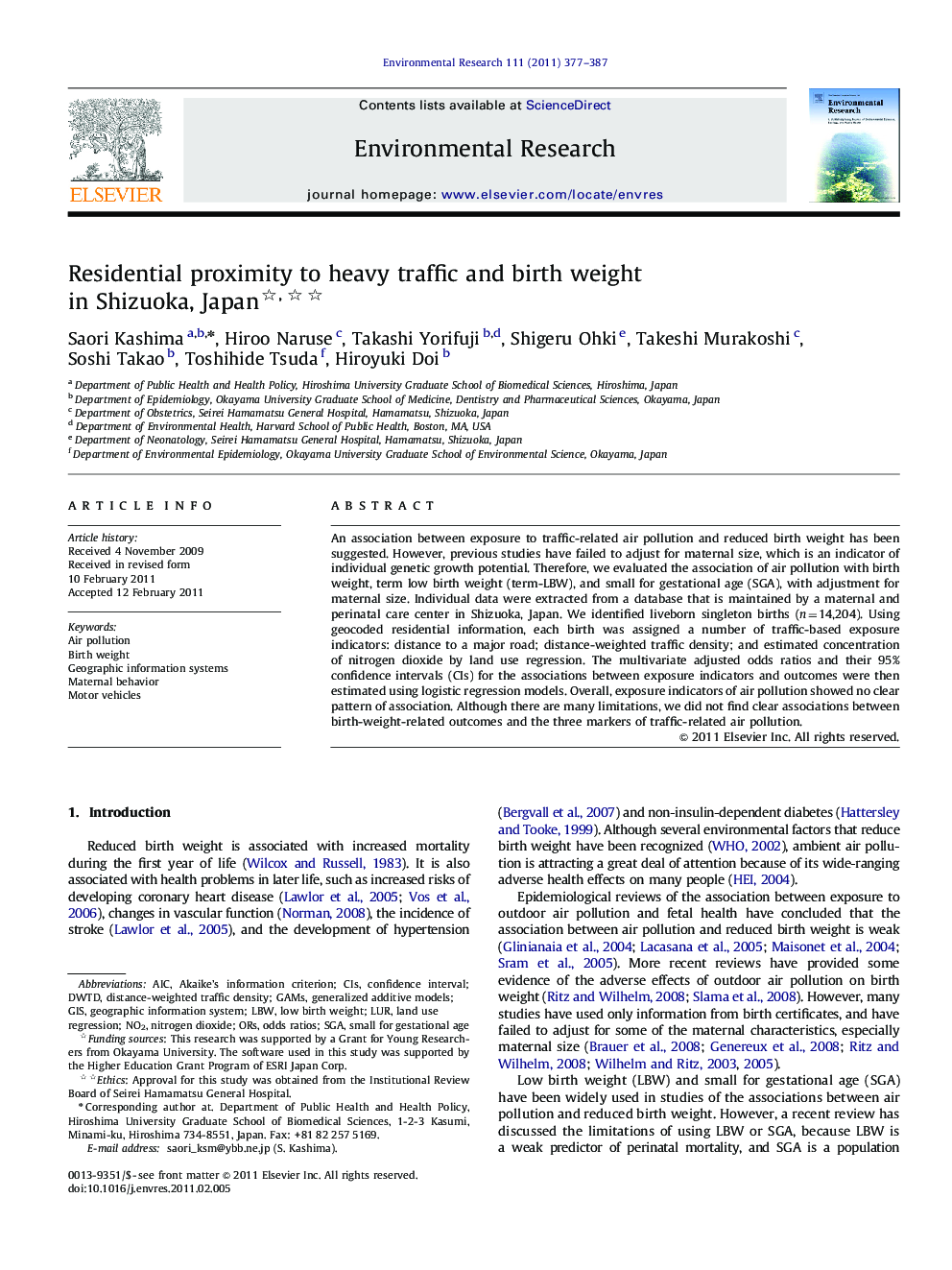| Article ID | Journal | Published Year | Pages | File Type |
|---|---|---|---|---|
| 4470053 | Environmental Research | 2011 | 11 Pages |
An association between exposure to traffic-related air pollution and reduced birth weight has been suggested. However, previous studies have failed to adjust for maternal size, which is an indicator of individual genetic growth potential. Therefore, we evaluated the association of air pollution with birth weight, term low birth weight (term-LBW), and small for gestational age (SGA), with adjustment for maternal size. Individual data were extracted from a database that is maintained by a maternal and perinatal care center in Shizuoka, Japan. We identified liveborn singleton births (n=14,204). Using geocoded residential information, each birth was assigned a number of traffic-based exposure indicators: distance to a major road; distance-weighted traffic density; and estimated concentration of nitrogen dioxide by land use regression. The multivariate adjusted odds ratios and their 95% confidence intervals (CIs) for the associations between exposure indicators and outcomes were then estimated using logistic regression models. Overall, exposure indicators of air pollution showed no clear pattern of association. Although there are many limitations, we did not find clear associations between birth-weight-related outcomes and the three markers of traffic-related air pollution.
Research highlights► We evaluate the effects of traffic-related air pollution on reduced birth weight. ► We adjusted the maternal size as an individual genetic growth potential. ► We did not find the effects of air pollution on reduced birth weight. ► The main finding did not change even after adjustment for maternal size.
